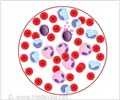Q: Which specialist should I consult to rule out Myelodysplastic Syndromes?
A: You should consult a hematologist or specialist in blood diseases to rule out MDS.
Q: Is Myelodysplastic Syndromes a form of cancer?
A: The changes in the bone marrow in MDS render it a form of pre-cancer. The risk of progression to acute myeloid leukemia is high in MDS cases.
Q: Can Myelodysplastic Syndromes be cured?
A: The only possible cure for MDS is allogeneic donor bone marrow transplant. In its absence treatment aims at reducing the progression of disease and supportive care.
Q: How do I know which treatment is suitable for me?
A: Once a diagnosis of MDS is made, the disease will be categorized as ‘low risk’ or ‘high risk’ based on a number of parameters. Treatment will depend on the risk category of your MDS.
Q: How long will it take to get better with treatment?
A: Response to treatment may take 4-6 months and the optimal response may not be evident till 9 months of therapy.
Q: Can I inherit Myelodysplastic Syndromes?
A: It is exceedingly rare to inherit MDS.
Q: How long will treatment be continued?
A: Since MDS is incurable, disease modifying medications will be given until the patient is unable to tolerate treatment due to toxicities.
Q: What are the toxicities associated with Myelodysplastic Syndromes therapy?
A: The most common toxicities relate to the gastrointestinal tract, namely, nausea vomiting and
diarrhea. Other serious toxicities relate to bone marrow suppression with increased risk of recurrent infections.
Q: Is frequent blood transfusion bad?
A: Frequent blood transfusions can cause iron overload symptoms. When this happens iron
chelation therapy may be necessary.
Q: What should I do to remain healthy and reduce progression?
A: Take a healthy balanced diet, get adequate sleep, keep yourself fit with daily exercise as appropriate for you. Indulge in activities that you enjoy and be in the company of loved ones. Take the prescribed medications regularly.
Q: What are the survival rates in Myelodysplastic Syndromes?
A: Depending on the risk category, the survival rates vary between over 8 years for very low risk to less than a year for very high risk.
Transformation to AML takes more than 10 years in low risk category to less than a year in very high risk category.








